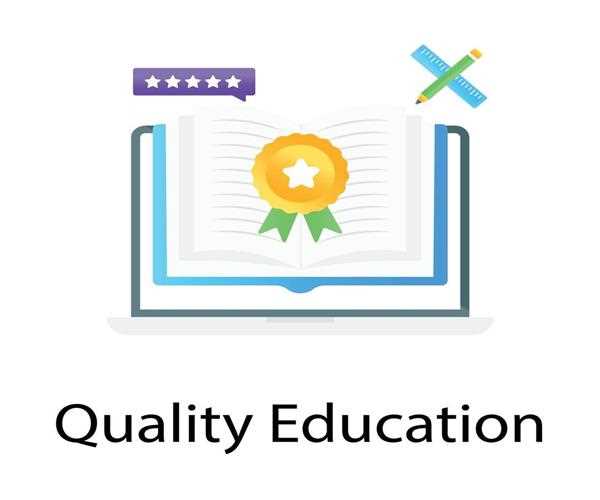
25-Jul-2023 , Updated on 7/25/2023 5:24:55 AM
Indian Education System- Challenges and Opportunities
Highlights
Challenges
- Access and Inclusivity- Disparities in access to education between urban and rural areas, and among different socioeconomic groups.
- Quality of Education- Varying standards of education across different states and regions.
- Infrastructure- Lack of proper infrastructure, especially in rural schools, affecting the learning environment.
- Teacher Shortage- Insufficient number of qualified teachers, leading to high student-teacher ratios.
- Outdated Curriculum- Need for a more relevant and updated curriculum that aligns with the demands of the modern workforce.
Opportunities
- Digital Transformation- Leveraging technology to improve access to education and enhance learning experiences.
- Skill Development Initiatives- Promoting skill-based education to equip students for future job opportunities.
- Teacher Training- Investing in teacher training programs to improve teaching quality and professional development.
- Inclusive Education- Implementing policies to ensure education reaches marginalized and underprivileged communities.
- Public-Private Partnerships- Collaboration between the government and private sector to improve education infrastructure and resources.
- Education Reforms- Continuously updating and reforming the education system to meet the changing needs of society.
India has one of the largest education systems in the world, with over 1.3 billion people. The system is made up of a variety of different types of schools, including government schools, private schools, and religious schools.
The Indian education system has a number of challenges. One of the biggest challenges is the lack of access to education. Millions of children in India do not have access to basic education, and even those who do often receive a substandard education.
Another challenge is the quality of education. The curriculum in many Indian schools is outdated and does not prepare students for the demands of the 21st-century workplace. Teachers are often poorly trained and underpaid, and resources are scarce.

Despite these challenges, there are also a number of opportunities in India's education system. The government is investing heavily in education, and there is a growing demand for high-quality education. The private sector is also playing an increasing role in education, and there are a number of innovative new schools being developed.
Here are some of the specific challenges and opportunities that India's education system generally faces-
Challenges-
- Lack of access to education- Millions of children in India do not have access to basic education. This is due to a number of factors, including poverty, location, and gender.
- Quality of education- The quality of education in India is often poor. The curriculum is outdated, teachers are poorly trained, and resources are scarce.
- Inequality- There is a high level of inequality in India's education system. Children from wealthy families have much better access to quality education than children from poor families.
- Gender discrimination- There is still a significant amount of gender discrimination in India's education system. Girls are less likely to be enrolled in school than boys, and they are more likely to drop out of school.
- Language barrier- India is a multilingual country, and this can be a barrier to education for many children. Children who speak a language other than the language of instruction may struggle to learn.
- Infrastructure challenges- India's education system faces a number of infrastructure challenges, such as a shortage of schools, classrooms, and teachers. This can make it difficult to provide quality education to all children.
Opportunities-
- Growing demand for education- There is a growing demand for education in India. This is due to a number of factors, including economic growth, urbanization, and the increasing awareness of the importance of education.
- Investment in education- The government is investing heavily in education. This is evident in the increased allocation of funds for education in the national budget.
- Private sector participation- The private sector is playing an increasing role in education. There are a number of private schools and colleges being developed, and the government is encouraging private sector participation in education.
- Innovative new schools- There are a number of innovative new schools being developed in India. These schools are using new teaching methods and technologies to provide quality education to students.
- Digital learning- Digital learning is becoming increasingly popular in India. There are a number of online courses and resources available, which can help students learn at their own pace.
- International collaboration- India is collaborating with other countries on education. This is helping to improve the quality of education in India and to make it more accessible to all children.
I would like to give tips to all the people who read this view so that a voice should be raised in order to address the challenges and seize the opportunities in Indian education system-
- Increase the investment in education- The government needs to increase its investment in education. This will help to improve the quality of education and make it more accessible to all children.
- Reform the curriculum- The curriculum in India needs to be reformed to make it more relevant to the demands of the 21st century workplace.
- Improve the quality of teachers- Teachers in India need to be better trained and paid. This will help to improve the quality of education.
- Provide more resources- Schools in India need to be provided with more resources, such as textbooks, computers, and lab equipment. This will help to improve the quality of education.
- Address the gender gap- The gender gap in education needs to be addressed. This can be done by providing more opportunities for girls to enroll in school and by providing them with support so that they can stay in school.
- Promote digital learning- Digital learning can be a great way to improve access to education in India. The government can provide more support for digital learning by providing access to computers and the internet in schools.
- Collaborate with other countries- India can learn from the experiences of other countries in improving its education system. The government can collaborate with other countries on education by exchanging ideas and sharing resources.
India has the potential to provide quality education to all of its children. By addressing the challenges and seizing the opportunities in its education system, India can build a more prosperous and equitable future for its citizens.

SEO and Content Writer
I am Drishan vig. I used to write blogs, articles, and stories in a way that entices the audience. I assure you that consistency, style, and tone must be met while writing the content. Working with the clients like bfc, varthana, ITC hotels, indusind, mumpa, mollydolly etc. has made me realized that writing content is not enough but doing seo is the first thing for it.
Join Our Newsletter
Subscribe to our newsletter to receive emails about new views posts, releases and updates.
Copyright 2010 - 2025 MindStick Software Pvt. Ltd. All Rights Reserved Privacy Policy | Terms & Conditions | Cookie Policy